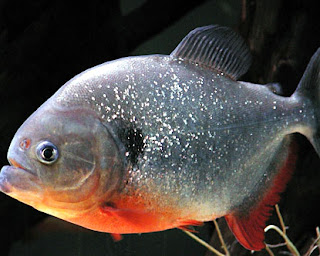Primate Comparison
Body Size & Sexual Dimorphism
Lemurs
a. Lemurs are a native primate species to the island of Madagascar. Madagascar has an extremely seasonal climate, which has caused for many lemur adaptations. There can be extreme drought conditions to raging cyclone rainstorms, and anything in between.
b. The body size of the lemurs has a large range due to the 100 plus species and types of lemurs. They can range anywhere from 1 oz. all the way up to 20 pounds! Before humans became involved with the lemurs, there were even some as large as male gorillas. Sexual dimorphism, or the visual difference between the male and females, doesn’t really appear in the lemur family. A couple specific species within the lemurs exhibit larger females, but other then that they are basically the same.
c. Although the lack of sexual dimorphism doesn’t exhibit any environment influence, the array of body sizes definitely does. Since there is such a collections of body sizes from tiny to relatively large, this tells me that Madagascar has a little something for everybody. The diverse landscape can cater to almost any size creature and obviously so considering the lemurs alone.
Spider Monkey
a. Spider monkeys are found in the lush green rainforests of Central America. These particular monkeys like to spend their time in the tops of the tree canopies gathering fruit, insects, and flowers. Spider monkey populations are decreasing due to human consumption and deforesting.
b. The body size of the spider monkey usually ranges about 20-25 pounds at two feet tall with disproportionately long limbs, and a tail measuring in at up to three feet. The hands of the spider monkey are curved with the tail acting as a fifth appendage able to grasp branches and support the weight of the monkey. Again sexual dimorphism isn’t very apparent within the spider monkey species other than the female being a pound or so lighter. One main difference in the sexes is the tendency for males of the same family to stick together for life, while the females disperse and create other families. This is known as male philopathic.
c. Similar to the same situation of basically no sexual dimorphism spider monkeys do exhibit adaptation traits with their body size and type. Since they spend nearly all their life within the tops of the tree canopies, their overly long limbs help them swing from branch to branch and reach their prized fruits. The trait of spider monkeys being male philopathic would help them readily reproduce and create many smaller groups of baboons ready to capitalize on their area of the rainforest.
Baboon
a. The baboon is indigenous to the African and Arabian countries. They enjoy the savannahs and woodlands, but have been found in almost every climate type. Anywhere a water source and safe place to sleep (cliff face, tree top, etc.) can be found, so can baboons. Although baboons have been known to survive for extended periods without water by licking the dew off their fur at night.
b. Baboons are generally medium to large animals ranging in weight and size from 30 pounds at 20 inches, to 90 pounds at nearly 50 inches. Sexual dimorphism is very pronounced within the baboons. Male baboons are much larger, have large canine teeth, and certain specific species have large manes, which the females do not.
c. The baboons’ body size was most likely influenced by its environment through predator survival. Only the larger and more intimidating baboons would naturally survive and therefore create larger offspring in the process. The sexual dimorphism traits most likely evolved through males being the natural leaders in the troop. Since males possessed the larger teeth and intimidating manes, they would have better chance for warding off predators, and being able to reproduce once again.
Gibbon
a. Gibbons reside in the rainforests of China, Borneo, Indonesia, India, Sumatra, and Java. They tend to stay up in trees for the majority of their life and their bodies are well equipped to do so. Gibbons are one of the fastest moving mammals through the trees with highly agile ball and socket wrist joints.
b. Gibbon’s body size are small and lightweight measuring up to three feet and 15 pounds. Gibbons’ arms are notoriously larger than their legs and like all apes they have no tail. Sexual dimorphism is little to none within the gibbon species with males only being very slightly larger than females and sometimes possessing different fur color.
c. The body size of Gibbons are environmentally adapted to having a successful life in the trees. Their very long arms, ball and socket wrists, and lightweight bodies help them maneuver at high rates of speed to escape predators. The lack of sexual dimorphism doesn’t really have anything to do with the environment, but I suppose this somewhat common trait between the last few would help any particular primate from getting singled out of the group.
Chimpanzee
a. Chimpanzees are native to the Congo river area of Africa, but can be found in 21 different countries in Africa spanning all the way to the Atlantic. They live in a variety of habitats including rainforests, woodlands, swamps, and grasslands.
b. Chimpanzee body size ranges from two-three feet in females, and three-four feet in males. Females tend to weigh 57-110 pounds, and males weigh in at 90-115 pounds. Chimpanzees have a high level of sexual dimorphism ranging from size, behavior, appearance, and life span. Males are larger, more aggressive, and live longer.
c. Environmentally speaking I feel as though the chimpanzee body size has adapted to it’ surroundings through being hunted and ability to hide. If the chimpanzee were much larger, it would be difficult to hide and get away quickly, yet much smaller and the chimp would have a lot more predators to worry about. I also think the chimps human like sexual dimorphism has helped them formed very strong family units as well as choosing who is leader, etc.








